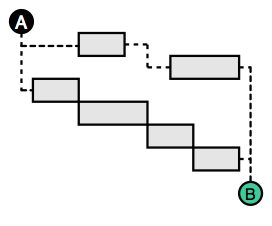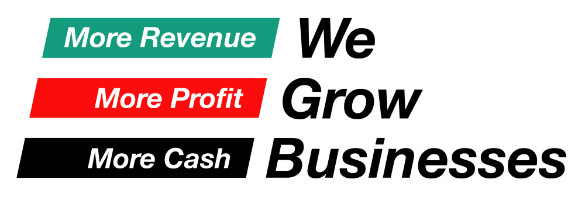If you’re looking for information on how to grow your small business, business strategy describes some important concepts and actions which you should be aware of. Here are some tips to cut through the jargon.
We view business strategy as a process, not just a goal or an outcome. We’ve divided it into three easy to understand steps – pinpointing, planning and performing. So let’s now answer, “What is business strategy?”
What is Business Strategy? It’s Pinpointing
One of the most common mistakes when thinking about what is business strategy is to think that it is a goal. For example, people might say, “Our business strategy is to be the market leader in home furnishings,” or “Our strategy is to double revenue year-on-year.” Statements like these don’t make a great deal of sense because strategies and goals are not the same thing. Professor Richard Rumelt, one of the godfathers of modern strategic thinking says that he never fails to be amazed by the number of business leaders who confuse goals and strategy.
When new leaders join organisations they are often keen to stamp their authority and appear decisive. Sometimes the energy and enthusiasm of newly promoted managers can lead them to set ambitious goals. The error here is setting goals without first understanding what needs to be achieved. Huge amounts of time and money can be spent pursuing incorrect goals. For this reason, we believe that business strategy begins with pinpointing the issues that need to be addressed.
Accurate pinpointing involves answering fundamental questions like whether we spend too much money, don’t bring in enough money, or a bit of both. We should analyse what we do well (our strengths) and what we could improve on (our weaknesses). To do this accurately often involves comparing to our competition, and understanding what makes us better (our competitive advantage). We may also consider what is going on in the wider environment – political, social, regulatory, etc (see PESTLE).
Having pinpointed the issues we face we’re now in a position to make some informed decisions about our future and address what is business strategy.
What is Business Strategy? It’s Planning
Our next step in explaining what is business strategy is to think about planning. Planning involves working out the steps needed to reach a goal. Having pinpointed what needs to change planning is used to work out how to change it and reach our goal.
The old saying goes that if you fail to plan you can plan to fail. One reason why this is true is that the discipline of planning often reveals many more issues than had been previously identified. It’s far cheaper to find issues on paper and change your approach, than find issues six months down the line after having spent lots of money.
At We Grow Businesses we recommend that the planning process is undertaken using two tools – the work breakdown structure and the project plan:
Work Breakdown Structure

Break complex tasks down into more manageable chunks. We use a hierarchical method called a work breakdown structure to identify tasks, and sub-tasks required (upper picture).
Project Plan
Having identified all the tasks to a suitable level of granularity we build a classic project plan. The plan describes the journey from A to B over time, including who, what, and in what order (lower picture).

What is Business Strategy? It’s Performance
Our final answer to what is business strategy is performance. Business strategy is not just a paper-based exercise. It involves mobilising people to deliver the plan. It involves monitoring and controlling activities to ensure we remain on track to reach our goal. It also includes reacting to unforeseen changes.
Even with a good plan in place things won’t automatically ‘just get done’. Internal factors need to be controlled. For example, over time teams will have new ideas that in isolation make perfect business sense. One business unit might decide to launch a new product line, which is profitable in the short term. However, this might contradict the wider organisational business strategy that has the goal of reducing the number of product lines to simplify the customer buying experience, for example.
External factors such as economic changes or regulator controls are not always predictable. When these occur it’s wise to revisit the original pinpointing work. Check how many of the originally identified problems remain valid. Often new managers will appear during times of significant change. Remember, there may well be people who are keen to make their mark and who will be tempted to tear up the old business strategy and in some cases reinvent the wheel.
Delivering a business strategy takes commitment and continual reiteration of the reasons why the business strategy is being delivered – the pinpointing. Tom Peters famously remarks, “What gets measured gets done”. When answering what is business strategy we can not exclude the measuring and management of performance.
Conclusion
In this article we’ve tried to simply answer the question, “What is business strategy?” We say it’s three things. It’s pinpointing the challenge. Then it’s planning. And finally it requires managing performance.
These are three features that describe business strategy. If any of these three things are missing when someone talks to you about business strategy then you should probably start hearing warning bells. It could indicate that the speaker doesn’t understand what is business strategy!


